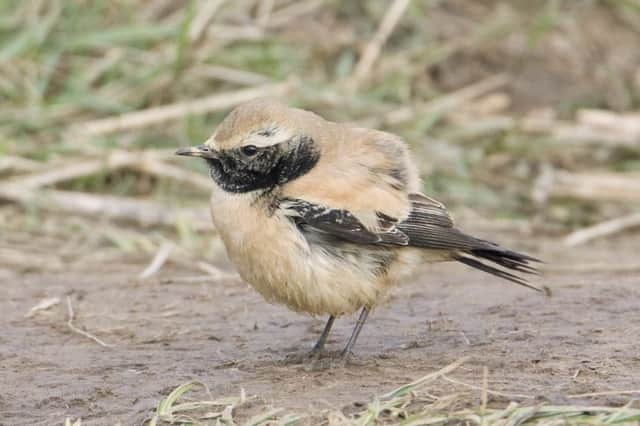Busy start to the birdwatching year


All wheatears are attractive birds and the desert, pictured, is no exception. The males have buff upperparts, black markings on the face, throat and wings, and white underparts and retain much of this plumage in the winter. They breed across a huge swathe of arid deserts stretching from Morocco to the Middle East and across Central Asia.
Some of the African birds in Morocco are resident throughout the year. Others further east migrate a short distance to Kenya and it is some of these that are thought to be involved in reverse migration, heading north instead of south. The majority of records in this country have been in late autumn between October and the middle of November but also in December and January.
Advertisement
Hide AdAdvertisement
Hide AdThe east coast, especially north from Bridlington, has had a number of previous records.
Another male had a lengthy stay at the RSPB’s Bempton Cliffs reserve between November 2011 and the end of January 2012 and hundreds of birders saw and photographed it, sometimes down to a few feet, in the field which was also next to the clifftop path.
Birds from the opposite direction to the wheatear – snow buntings – have been increasing in number with a flock of up to 50 at Barmston while inland up to 14 have been around the carpark at Danby Beacon on the North York Moors and 21 on Pendle Hill, Lancashire.
Twenty Lapland buntings, also from the far north were in fields near North Dykes, Flamborough. More glaucous and Iceland gulls have been reported, both on the coast and in roosts at inland sites with a juvenile glaucous coming in to roost at the Fairburn Ings reserve. Up to 12 Mediterranean gulls have been reported around the Holbeck Hall car park at Scarborough.
Advertisement
Hide AdAdvertisement
Hide AdThis winter’s exceptional influx of hawfinches is continuing with some sizeable flocks reported, especially in North Yorkshire with up to 28 reported in the trees around Fountains Hall at Fountains Abbey and 29 in the grounds of a private school near Gilling East.
Up to 12 parrot crossbills have continued to be seen at Howden reservoir, South Yorkshire.
A firecrest has been present at the Rodley Nature Reserve, Leeds.
The long-staying rose-coloured starling was still in Easington this week Rough-legged buzzards were reported at Copmanthorpe, York and perched on a telegraph pole at Bainton, East Yorkshire.
Advertisement
Hide AdAdvertisement
Hide AdGreat white egrets are being seen across England, including one at the RSPB Visitor Centre at the St Aidan’s Country Park, Leeds and another seen feeding on the grass verge of the northbound A1M motorway at Leeming Bar, North Yorkshire.